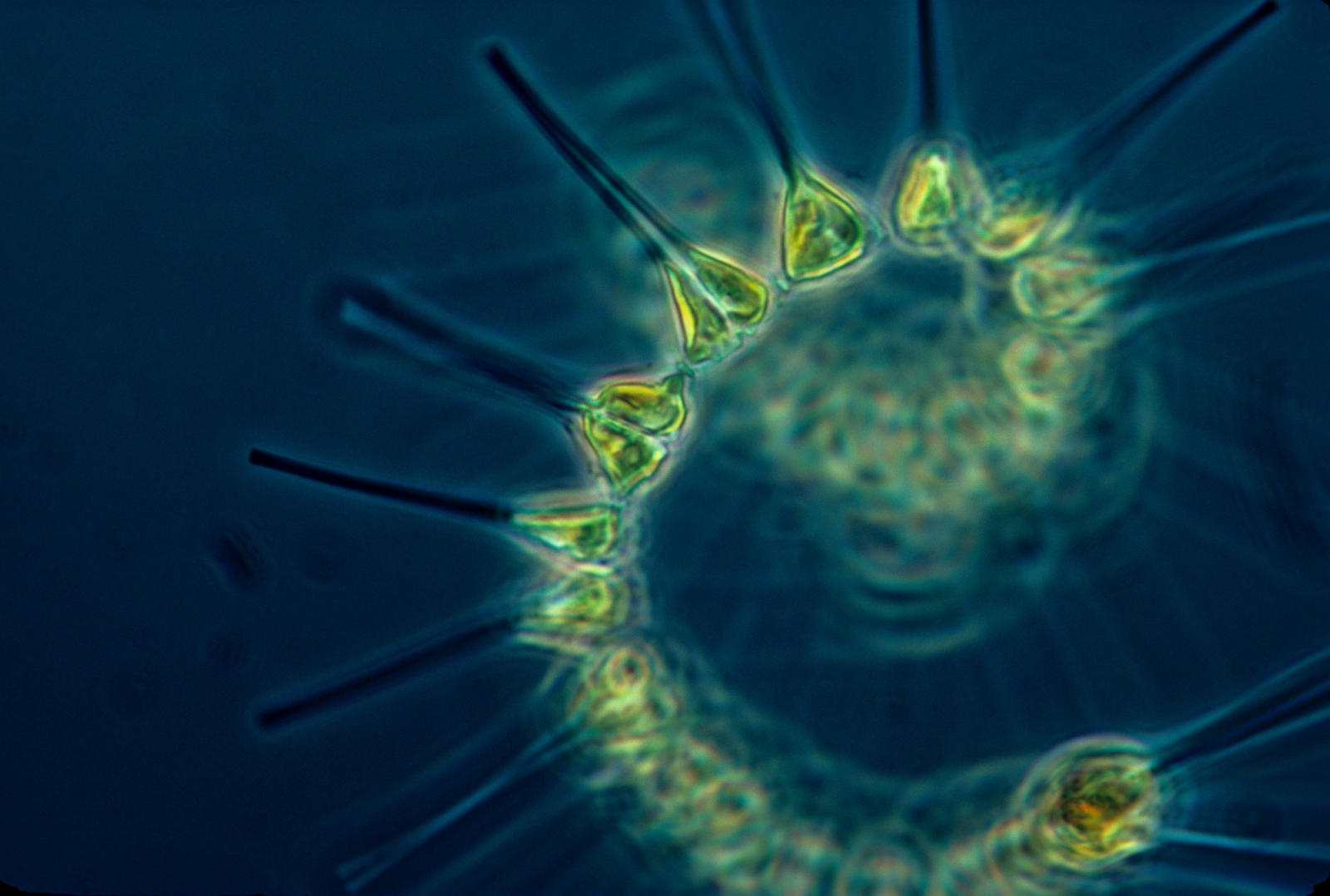Microscopic Plankton - Planet Earth Online
Interview with
Katy Owen - Phytoplankton - you have to think of them a little bit like the grass of the sea, they're tiny microscopic plants, thinner in diameter than a strand of human hair and you find them everywhere in seas and oceans around the world, hot, cold water, they're tiny little powerhouses, they photosynthesise and in doing so remove carbon dioxide from the atmosphere and convert it into a organic carbon as part of their bodies.
Richard Hollingham - Okay, let's get a bit closer to the water. We're not going to be able to see them, presumably, are we?
Katy Owen - No, they're very small in diameter, really, really thin. Thinner than a sheet of cling film.
Richard Hollingham - Let me just get a handful of water. So, I've got a handful of water and wet feet! How many plankton are there in there? Is that really just full of plankton?
Katy Owen - Absolutely teaming and you can have as many as 20,000 individual cells in just a millilitre of water, so huge quantities in a very small amount of volume.
Richard Hollingham - You're interested in this not just because it's important because of the food chain but its role in the global climate?
Katy Owen - Exactly right. Because they photosynthesise it's really key. They remove this carbon dioxide from the atmosphere and they take it out of circulation and they incorporate it into their bodies and then as they die or are eaten by something else in the food web that carbon is recycled or it is taken to the deep ocean so it's out of the way, it's removed, so it's a really good way of reducing carbon dioxide levels in the atmosphere.
and they incorporate it into their bodies and then as they die or are eaten by something else in the food web that carbon is recycled or it is taken to the deep ocean so it's out of the way, it's removed, so it's a really good way of reducing carbon dioxide levels in the atmosphere.
Richard Hollingham - So what are you doing.
Katy Owen - I use a machine called a flow cytometer which is borrowed from Biomedical Research, normally it's used to scan blood cells but I am applying it to marine science and using it to count these phytoplankton.
Richard Hollingham - Well let's get out of the wind here to your laboratory which is up there on the cliff.
Katy Owen - Sure why not.
Richard Hollingham - Well here we are in the molecular biology laboratory at CEFAS.
Katy Owen - The Centre of Environment, Fisheries and Aquaculture Science.
Richard Hollingham - And you have, rather helpfully, some flasks of phytoplankton and this looks completely green and this is, presumably, very concentrated.
Katy Owen - This is a very concentrated culture. These are some cells that grow here in the lab just for testing purposes and you can see how dense that is and you normally you wouldn't get that concentration in a natural sample. Here's one that I collected from the North Sea last week and you can see that it is more of that typical North Sea colour, brown.
Richard Hollingham - And next to them on the laboratory bench is this curious looking machine - it's about the size of a beer barrel I suppose but with the outside exposed and it's full of circuit boards and tubes. It does look almost like a device out of a science fiction film.
Katy Owen - It looks horrible, it looks really horribly complicated but it's actually quite a simple principle. It's a machine we use as a pump and we pump water, a stream of water, a stream of sea water, through the path of a laser beam and as the laser beam hits anything in that seawater such as debris or, hopefully, phytoplankton cells that laser light is scattered and we collect that information which gives us a lot of details on the size and the shape and the structure and also the pigment content of the phytoplankton cells.
Richard Hollingham - So individual phytoplankton. So you can count them but you can also see the size and shape of them.
Katy Owen - We have a whole lab which is dedicated to counting phytoplankton cells by light microscope but the problem with that is that is only covers a very small range of sizes things that we call the nano and the net plankton which are from 20 to 200 microns, but there is a real whole wealth of phytoplankton below that size range something called the picoplankton which are less than 3 microns so we're talking a fraction of the size of a human hair follicle and you can't see them with a light microscope and they're just too small to be counted or identified accurately, so this machine is not only capable of measuring them we can also approximately identify them and do thousounds of these cells within a few minutes.
Richard Hollingham - So is phytoplankton something we should all learn to appreciate a lot more?
Katy Owen - Definitely. I find them fascinating but I'm probably slightly biased but I find it amazing that things that are so small and so tiny we know just so little about. They are so important. We sail on them, we swim amongst them every day but we know very little information about them, so I think it's really key that they become more appreciated and loved a little bit more.










Comments
Add a comment